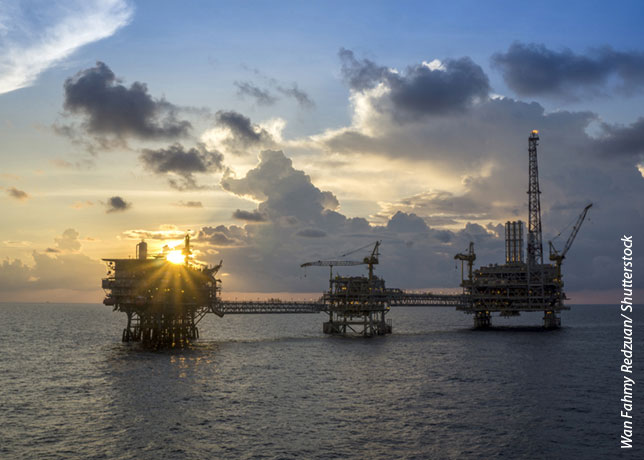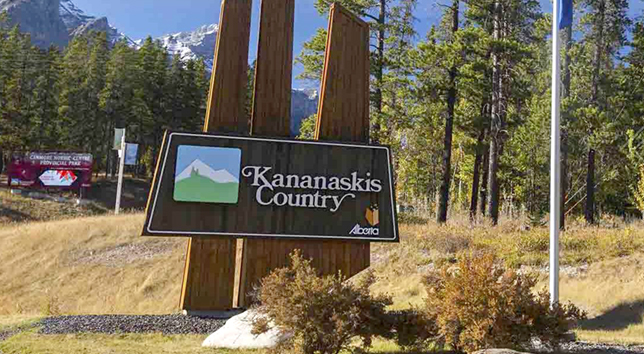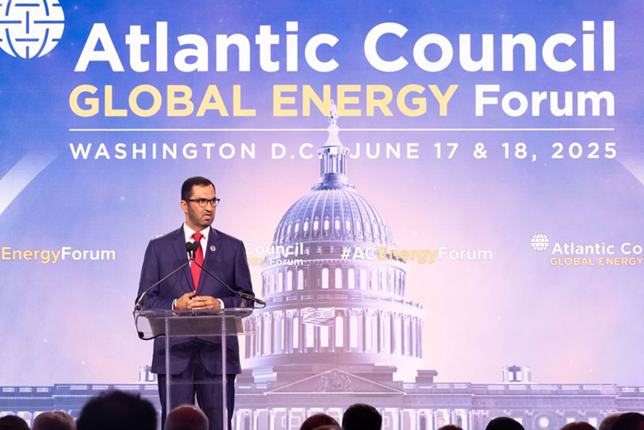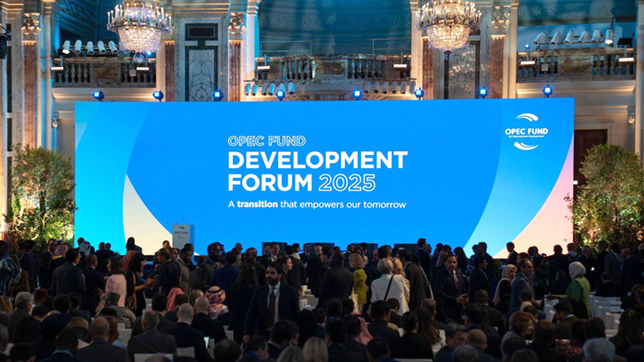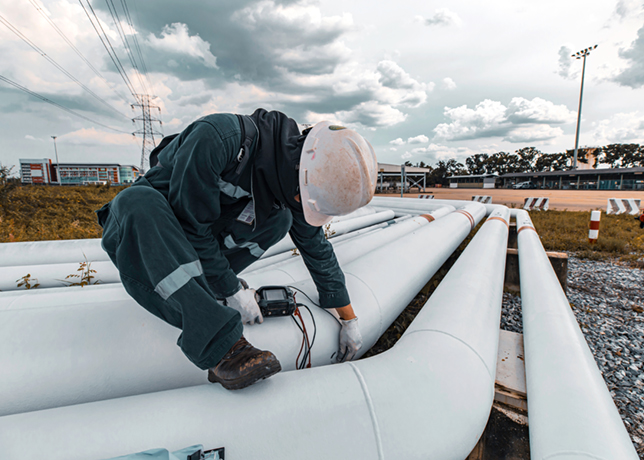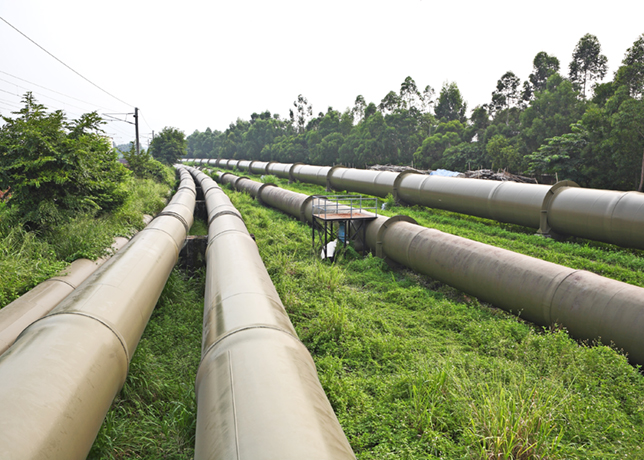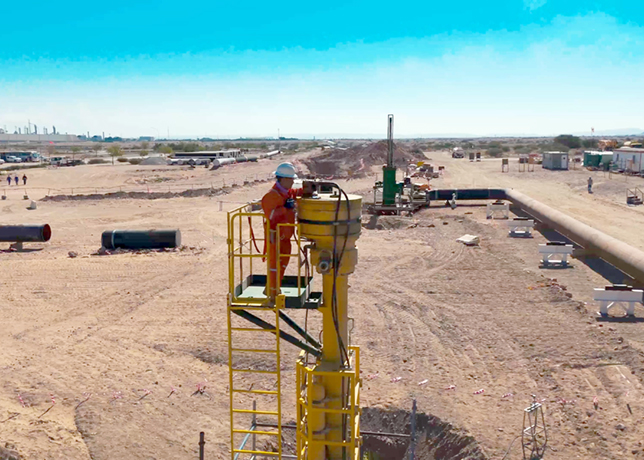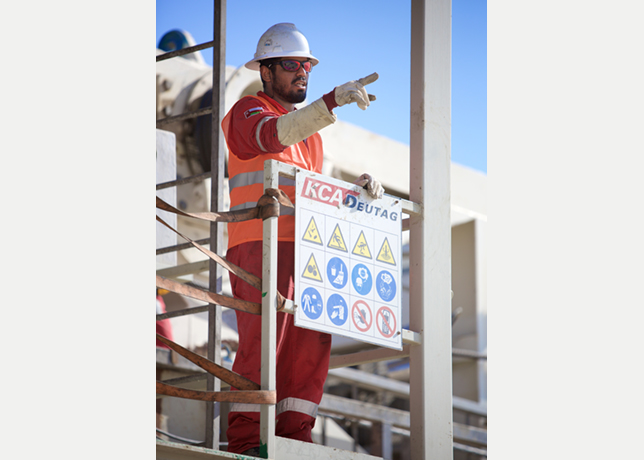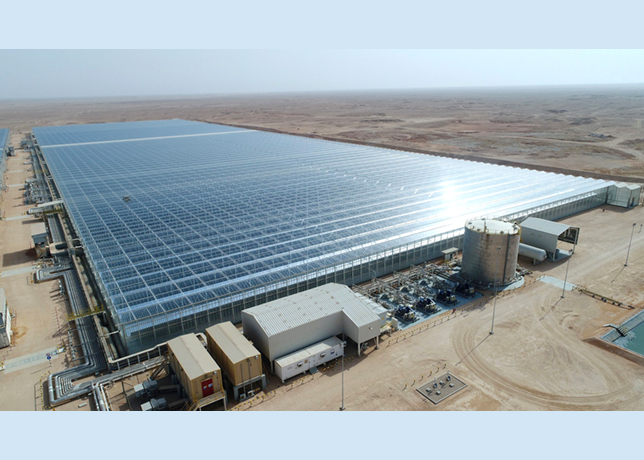
 A Sinopec plant ... firm signs gas exploration pact in Zone B of Rub al-Khali
A Sinopec plant ... firm signs gas exploration pact in Zone B of Rub al-Khali
Saudi Arabia has signed three groundbreaking gas exploration deals with Russian, Chinese and European companies, stressing the geopolitics of its new alliances.
The deals to look for gas in the northern deserts of the Empty Quarter, or Rub al-Khali, link state-owned Saudi Arabian Oil Co, or Aramco, with its fastest-growing oil customer, China, and its biggest rival oil producer, Russia, and cement ties with Europe.
“There is no question cooperation in the economic fields has the secondary benefit of increasing total cooperation in many fields. We have strong relations with Russia. We have had excellent cooperation in managing the stability of the oil market,” Saudi Oil Minister Ali Naimi said.
Absent from the first upstream opening since oil and gas were nationalised 30 years ago are any Americans. ChevronTexaco (CVX) unsuccessfully bid for one of the three blocks offered in a bidding process industry sources and analysts said was open and fair. Super major ExxonMobil (XOM), the biggest foreign investor in Saudi Arabia with $5 billion in refineries, walked away from an earlier incarnation of the current deals.
But the failure of Americans to snag a deal highlights how aggressively Chinese and Russian companies are expanding their overseas oil and gas operations, analysts said.
The bid winners, announced in January, are Russia’s biggest integrated oil company Lukoil Holdings , China’s biggest petrochemical producer Sinopec, and a consortium of Italy’s Eni SpA (E) and Spain’s Repsol YPF SA (REP). Aramco has a 20 per cent stake in the three joint ventures.
Saudi Arabia has been courting Russia, which produces about as much oil as Saudi Arabia by some measures and threatens Saudi’s share of the market. Last year, Saudi Crown Prince Abdullah went to Russia to sign a landmark cooperation agreement between the two. But so far, there have been no visible signs of more coordination on oil policy with the Organisation of Petroleum Exporting Countries.
China’s surging oil imports, fed by an economy expanding at a blistering rate, has helped keep oil prices high this year. Saudi Arabia is keen to supply more to its fastest-growing buyer. Aramco and Sinopec have agreed to set up a joint-venture refinery and petrochemical complex in coastal China.
The area the three groups will be exploring was carved up from the remains of a more ambitious program linking upstream gas exploration with downstream utilities, such as power generation and water desalination, that US super major ExxonMobil (XOM) was negotiating to develop. That project, one of three similar core venture projects meant to bring in $25 billion in foreign investment and boost the ailing domestic economy, fell apart when the two sides couldn’t agree on rates of return and the quality of gas reserves in the blocks.
The government repackaged the exploration blocks, stripping out the utilities for development separately. ExxonMobil’s area was cut into three. Royal Dutch/Shell Group (RD) and Total SA (TOT) sealed a deal this summer to explore a vast 200,000 sq km area in the Empty Quarter and the third core venture based near the Red Sea was tabled as uneconomic.
The deals come at a time when Saudi government coffers are overflowing thanks to oil prices near historic highs, though there are concerns in the coming years Aramco will need cash and technical help to continue pumping oil from its vast but aging oil fields, home to nearly all of the world’s excess capacity, as global energy needs continue to climb.
The gas deals strictly limit the possibility for companies to exploit any oil, limiting them to small finds of 500 million barrels in place. If a find has more than 5 per cent oil, it has to be surrendered to Aramco. The companies would be compensated for development costs, according to a Sinopec executive.
“The agreement is very clear: oil is a dry hole,” Naimi said.
“We’re confident that these reserves have no oil,” said Yahya Shinawi, director general of the eastern province branch of the Ministry of Petroleum and Mineral Reserves.
But, privately, executives from one of the winning companies said they believed their block has oil. While they would not immediately target it, they said their contract had enough wiggle room to allow them to develop the reserves at some point in the future.
That would be a seismic shift in Saudi policy, which until now has jealously guarded oil production though partnering on refineries such as with ExxonMobil. ChevronTexaco produces some Saudi oil under special agreement in the Neutral Zone shared with Kuwait.
The upstream opening is part of a gradual strategic move that could eventually allow foreign companies into the prized and profitable oil sector, a western diplomat said. Although Aramco sits on a quarter of the world’s largest oil reserves, some analysts suggest it doesn’t have the money and expertise needed to match the world’s growing energy needs.
Opinion on the outcome of the current deals varies. Some analysts say it’s a win for Aramco because it has won commitments for extensive exploration for some of its less promising areas to boost production from the current 7 billion standard cubic feet of gas a day to more than 14 billion standard cubic feet by 2025.
Other say the deals represent a failure, bringing in only a fraction of the $25 billion originally envisioned by Crown Prince Adbullah when he proposed the plan. The total exploration deals could cost several hundred million dollars each and the 40-year contracts include a 10-year exploration period, but companies have the option to pull out after five years if test wells are dry.
“It depends how you want to spin it,” said a Saudi-based oil executive.
Naimi said the kingdom already has commitments for $20 billion worth of investment in expanding and creating new petrochemical plants and was preparing bid packages for water desalination and power plants that had originally been part of the core venture projects.
The deals also pose a complicated technical challenge. Because gas will be sold to Aramco at a fixed price of 75 cents a million British thermal units - essentially at cost - companies need to find condensates which they can sell at international prices minus a 20 per cent royalty.
But geologists can’t tell what kind of liquids are with a gas reserve until they drill a well. So, companies will be looking for wet gas - but hoping it’s not oil, which would have to be handed over to Aramco.
Aramco will build a pipeline to each of the blocks to take out gas through the national gas network if the companies can produce a minimum of 350 million cubic feet of gas a day, but companies will have to pay pipelines for transporting the more profitable condensates themselves.
Companies will pay taxes at a rate of 30 per cent when they earn 8 per cent internal rate of return on capital, rising to 85 per cent when the rate of return hits 20 per cent. A 20 per cent royalty is levied only on condensates.
Zone A
The newly formed Luksar joint-venture between Russia’s Lukoil Overseas and Saudi Aramco has met for the first time and appointed Lukoil executives to lead the exploration venture, Lukoil Overseas confirmed in a statement.
Lukoil Overseas’ senior vice-president Azat Shamsuarov will serve as chairman of Luksar. Sergei Korovin, former head of international business development, has been named Luksar’s Chief Executive Officer. Lukoil Overseas won a tender for Block A in the northern part of the Rub al-Khali desert in Saudi Arabia early this year. Luksar has been set up since then with 80 per cent of shares owned by the Russian company and 20 per cent by Aramco. Exploration on Block A will begin shortly but there will be no drilling until 2005. Terms of the tender entitle Lukoil Overseas to produce natural gas and condensate at Block A. Crude oil is out of bounds.
In the first of three tender results, the Oil Ministry said Lukoil would explore and produce gas in 30,000 square kilometers of acreage, known as “Zone A”, located near Ghawar, the world’s largest oil field.
“The tendering was carried out in the best way, with clarity and transparency, and was accepted by all the participating companies,” said Saudi Oil Minister Ali al-Naimi.
All the US, European and Asian companies that bid on the acreage attended the opening of bids and award of the tender, which the minister said was judged on four criteria, including the concessions requested by the companies on set royalty payments on gas condensate products.
Lukoil’s 40-year agreement for 80 per cent of the Saudi joint-venture company, signed in March 2004, will shift the company’s focus away from marginal projects in Central and South America, Moscow-based Renaissance Capital oil analyst Adam Landes said.
“This could trigger rationalisation of the portfolio,” he said.
Lukoil, Russia’s biggest integrated oil company, produces about one-quarter of Russia’s oil output with about 19.3 billion barrels of oil equivalent reserves, half in western Siberia. The company has projects in the Caspian, Central and South America.
Saudi Arabia, Opec kingpin, has been actively courting Russia to bring them in line with the group’s policies.
The two signed an energy cooperation agreement in September.
Zone B
State-owned second largest oil producer in China, China Petrochemical Corp. (Sinopec Group), announced it had signed the natural gas exploration and development agreement for Section B in Rub Alkhali Basin with Saudi Arabia’s Ministry of Petroleum and Saudi Aramco.
The project marks a breakthrough of Chinese oil companies in Saudi Arabia, which boasts the world’s largest gas reserves. China’s two onshore oil producers, CNPC and Sinopec Group, had been limited to undertaking engineering and service projects only in Saudi Arabia before the agreement, due to strong competitiveness of western energy companies in the region.
The block secured by Sinopec Group, covering an area of 38,000 sq km in the southern part of Saudi Arabia, is one of the three gas sections put up for tender by the Saudi Petroleum Ministry early this year. The other two sections, Section A and Section C, with a combined area of 82,000 sq km, were granted to Russia’s Lukoil and the international consortium of Italy’s ENI, Spain’s Respol-YPF and Saudi Aramco respectively. Sinopec Group, through its subsidiary, the International Petroleum Exploration and Development Co, is to be responsible for 80 per cent of the investment for the joint-venture company to be established for conducting risk prospecting in the section.














